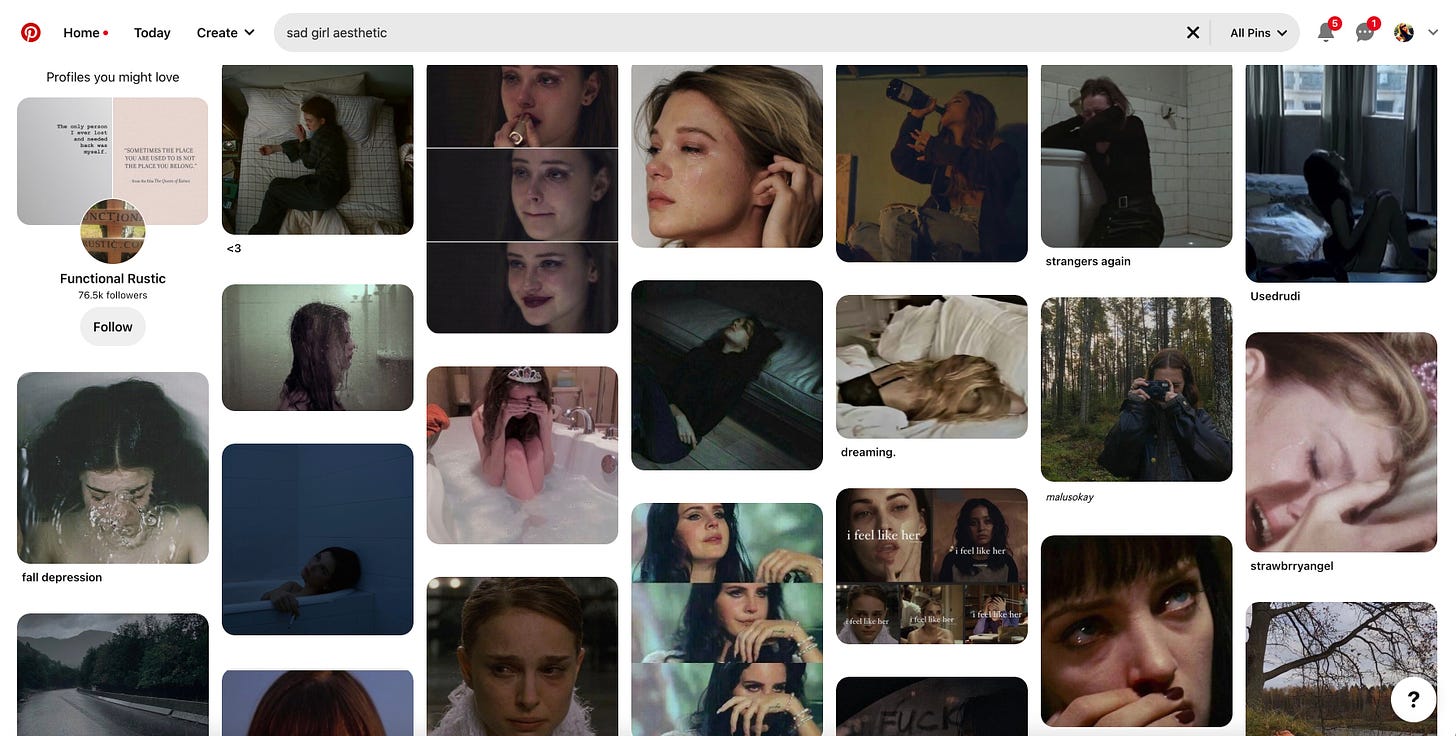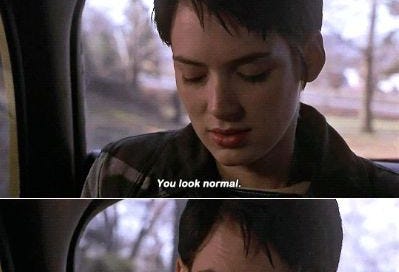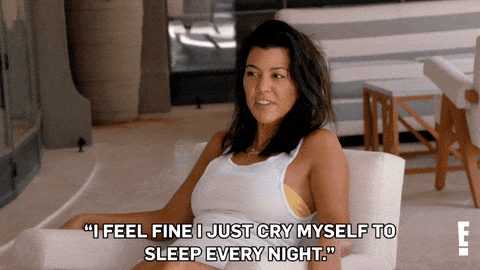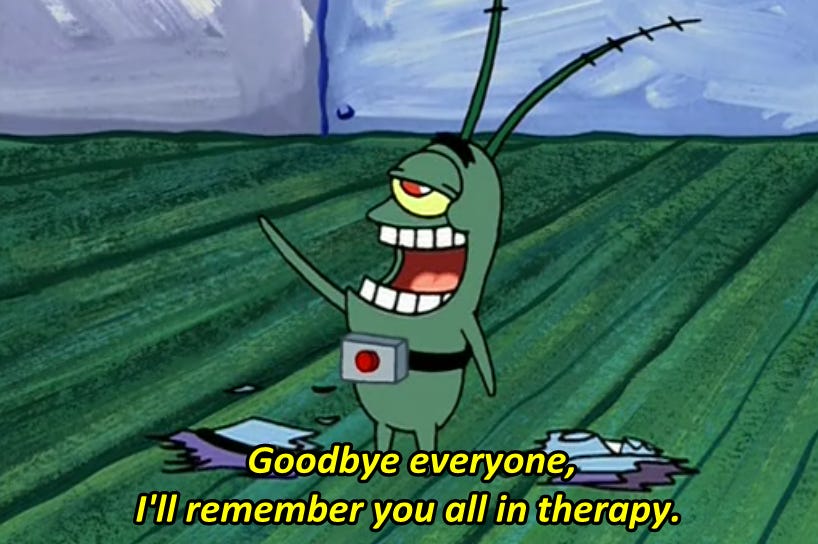Now that the holidays are over, the Northern hemisphere is settling into winter, the cliched breeding ground of sadness and brain fog that only the promise of warm weather can cut through. Seasonal depression has become an aesthetic extended to all seasons — who can resist the alliteration of sad girl spring and sad girl summer! — and our media consumption reflects that.
If you’ve spent five minutes in bookish corners of the internet over the past couple of years, you know about sad girl novels. You’ve also probably noticed that “sad girl” is almost always interchangeable with “hot girl” in this context, even though in real life, sadness and mental illness aren’t exactly “hot.” Anyone with a mental illness — maybe even certified hot people — will tell you they’ve spent a lot more time feeling weird and trying to either mask or accept that weirdness than they’ve ever felt that it was an attractive quality.
“Weird girl winter” is my attempt to remove the sheen of pretty privilege from what we think of when we hear the term sad girl novels, to allow for weirdness and sadness and unhinged behavior beyond conventionally attractive, privileged women.
I’m so interested in the way we’ve romanticized being weird and sad on the internet when the weird or sad girl is objectively hot. Mental illness has become a lot less taboo as a whole thanks to the internet, but it’s rarely as normalized or even celebrated as it is when it’s the people we wish we looked like who are mentally ill. Along with the whole “hot girls have IBS” thing, now hot girls have anxiety — at least on TikTok. But who gets to be a hot girl with anxiety or depression? Sad girl novels tend to give the same answer: young, socially advantaged white women.
Romanticizing mental illness in certain demographics can be explained by the term “Girl, Interrupted syndrome,” given a literary angle in the BuzzFeed article “Sad Girl” Books Can Be Racist. For a lot of women my age, Girl, Interrupted was the first movie we saw that put specifically girls’ and women’s mental illness into graphic visual context, and it almost felt empowering.
We fear feeling helpless and isolated by the patriarchal dismissal of women’s mental illness as too emotional, hysterical, bitchy, delusional; reclaiming and embracing mental illness, even in its most weird, unhinged states, can be satisfying. Sometimes it even feels like a rebellion, as popularized by Audrey Wollen’s 2015 term Sad Girl Theory, the idea that women being sad loudly can be an act of political activism.
In high school and early college, I made my entire personality “girl who no one understands” because it was easier to rationalize my feelings through sad girls before me like Susannah Kaysen and Sylvia Plath than to think about how sad I was. It’s incredibly validating to read a book or watch a movie or listen to a song that just gets it. Movies and books give us meaning and words to lean on when we don’t have the words ourselves. And isn’t it easier to just say “I’m in my Bell Jar era” instead of explaining your true feelings and risk a vulnerability hangover? You can even find an entire Goodreads list (the books are exactly what you’re expecting) to prove the point.
But by assuming that no one could understand me, except for maybe Winona Ryder, I wasn’t trying to understand anyone else either, especially not anyone different than me. When the mainstream examples of mentally ill women in movies and literature are white and often well-off, when there aren’t similarly glamorized depictions of people of color with mental illnesses, it’s easy for white women to internalize the message that we are the pinnacle of intelligent, salvageable mental illness. For white women, thinking we’re the most special can quickly become a weapon.
“The concept of the Sad Girl has a history of white women claiming to use their sadness and fragility to undermine the gendered perception that softness equals weakness.” (BuzzFeed)
At the intersection of sad girl books and feminism are white women’s tears, the latter of which deserves a much longer conversation about white feminists’ ability to weaponize their sadness (recommendation for Ruby Hamad’s White Tears/Brown Scars). That is, they have the power to use their “vulnerability” to keep out The Other.
None of this is to minimize mental illness in white women or suggest we shouldn’t have it — as you can assume, I myself have enough diagnoses and pharmaceuticals to never assume — but rather to acknowledge that mental illness has gatekeepers, and sad girl books can easily become a tool to uphold barriers. Mental illness isn’t necessarily any easier for white women, but we are often given more grace and acceptance, which comes with access to resources not afforded to marginalized communities but crucial to anyone living with and managing a mental illness.
Despite understanding the effects on well-being of both overt and covert racism and systemic prejudice that devalue lives and uphold generational trauma, we still approach mental illness in women of color with less understanding, less compassion. Society is most sympathetic to mental illness when it presents as a functioning, thin, attractive white woman.
Sad girl novels present an opportunity to change the narrative, but popular literature only mirrors reality: In 2020, white women were more likely to seek treatment than any other race, which is an issue of access. No wonder our white sad girl main characters are suffering louder too.

One of the ironies of celebrating sad girl novels is that we risk upholding tropes about mentally unwell women. In real life, women are hardly ever just sad girls, or unhinged girls, or [insert buzzword here] girls. We are far more complicated than that, but movies and books don’t always allow for that nuance. Race, gender expression, socioeconomic status, and familial trauma are all part of the nuance we miss when we’re distracted by an obsession with tortured white women.
The goal was to create space for women to exist beyond desirability, according to Audrey Wollen’s 2015 Sad Girl Theory, essentially an act of rebellion. But how do we prevent the rallying cry from becoming a fence keeping us in as much as men out, and who are we forgetting to free in our rush toward revolt?
This isn’t to condemn sad girl books, though plenty of people have been doing just that for several years now if you want to agree with them or yell at them. And the existing sad girl books aren’t the problem; the publishing industry prioritizing white voices is. It is not a coincidence that sad girl novels feature so many characters from similar backgrounds. Also a problem is our insistence on reading in a vacuum anything that we don’t feel like confronting in ourselves.
So, in defiance of hot person privilege that isn’t extended to all of the weirdos of the world, here are my Weird Girl Winter books, including some still sitting on my TBR and some that will be published in 2023. I’m trying to be better at reading POC voices as well as queer and nonbinary ones. The list of weird girlies is never-ending, so send your recommendations!
some Weird Girl books I’ve read
I’m purposely excluding My Year of Rest and Relaxation, The Bell Jar, anything by Joan Didion, Sally Rooney, Virginia Woolf, etc. not because they shouldn’t be here but because y’all aren’t fucking stupid and they defeat the point.
Queenie by Candice Carty-Williams — I will always want to give Queenie a hug. She sure as hell needs one in spite of some god-awful friends and trashbag men dragging her down. She deserves the world!
The Pisces by Melissa Broder — Broder is the queen of writing weird white women. Milk Fed also belongs in this list, but The Pisces is a special kind of unhinged white woman.
A Touch of Jen by Beth Morgan — Looks at the effects of social media comparison, which certainly contributes negatively to women’s mental health. It just goes off the rails to do so.
Joan Is Okay by Weike Wang — Joan is one of those characters who steals your heart by frustrating you. And while she doesn’t always express the kinds of emotions you expect out of a classic Sad Girl, she does surprisingly make you feel a lot of emotions.
Post-Traumatic by Chantal V. Johnson — I can’t rave about this book enough lately. The main character, Vivian, is like a version of Queenie for people my age. She is incredibly frustrating at times, but she’s still so endearing. I think every trigger warning under the sun applies to this book; all the more reason to give Vivian a giant hug.
All’s Well by Mona Awad — Some really sharp commentary on women’s pain, all with Awad’s signature weirdness, just like Bunny. It’s also a fun ode to Shakespeare, and let’s be real, the man was weird.
Motherthing by Ainslie Hogarth — for the horror fans! This book really surprised me this year. I love a horror novel that can also provide social commentary on feminine gender roles and motherhood.
The Vegetarian by Han Kang — Yeong-hye is an incredible character study in spiraling and unspooling.
Luster by Raven Leilani — Edie is another character I will defend with my life, unapologetically. The blurb calls this “painfully funny,” which is accurate, but the pain is more like a tenderness.
Woman, Eating by Claire Kohda — sad girl, but an artsy vampire: automatically weird.
With Teeth by Kristen Arnett — With Teeth gives us perfectly uncool, bad mothers, which might just be the weirdest type of woman you can be in society.
Bestiary by K-Ming Chang — I have to be honest and admit I didn’t love this book, but I appreciate the addition of magical realism to the weird girl universe.
Valley of the Dolls by Jacqueline Susann — vintage white woman malaise, a cautionary tale.
Mona by Pola Oloixarac — short and sweet, but not actually sweet, just fully strange and eerie. I’m still not sure what I read, honestly.
Cleopatra and Frankenstein by Coco Mellors — I debated including this because it is the definition of hot girl privilege affording a white woman more resources to improve her mental health, but here we are.
some I haven’t read yet
Fever Dream by Samantha Schweblin — literally hot, literally weird, are fever dreams the ultimate hot weird girl?
Diary of a Void by Emi Yagi
Kim Jiyoung, Born 1982 by Cho Nam-Joo
Thrust by Lidia Yuknavitch
Breasts and Eggs by Mieko Kawamaki
Patricia Wants to Cuddle by Samantha Allen
If I Had Your Face by Francis Cha
Happy Hour by Marlowe Granados
Convenience Store Woman by Sayaka Murata (I’ve read her short story collection, Life Ceremony)
some not-yet published
Dykette by Jenny Fran Davis
Really Good, Actually by Monica Heisey
Chrysalis by Anna Metcalfe
The Guest by Emma Cline
A book literally called Sad Girl Novel (!) by Pip Finkemeyer
There are so many more I could include, so many I should have (I’m already wondering why I forgot Sorrow and Bliss), so many yet to be published that we’ll either embrace or sigh at. Sad girl novels aren’t going anywhere, but there’s room for them to grow: more inclusive, more diverse, more weird.
Thanks for reading ❤️ January is hard, so take care of yourselves, sad gorl or not.
Also: If you’re interested, you can donate to The Loveland Foundation, which helps provide mental health services for Black women and girls. There’s also the Asian Mental Health Collective, the South Asian Mental Health Initiative & Network, and more.







Well said!!! And so many good recs that I can’t wait to get my hands on!!!! I think the only “sad weird girl” book I have on this list is luster so I can’t wait to start now!